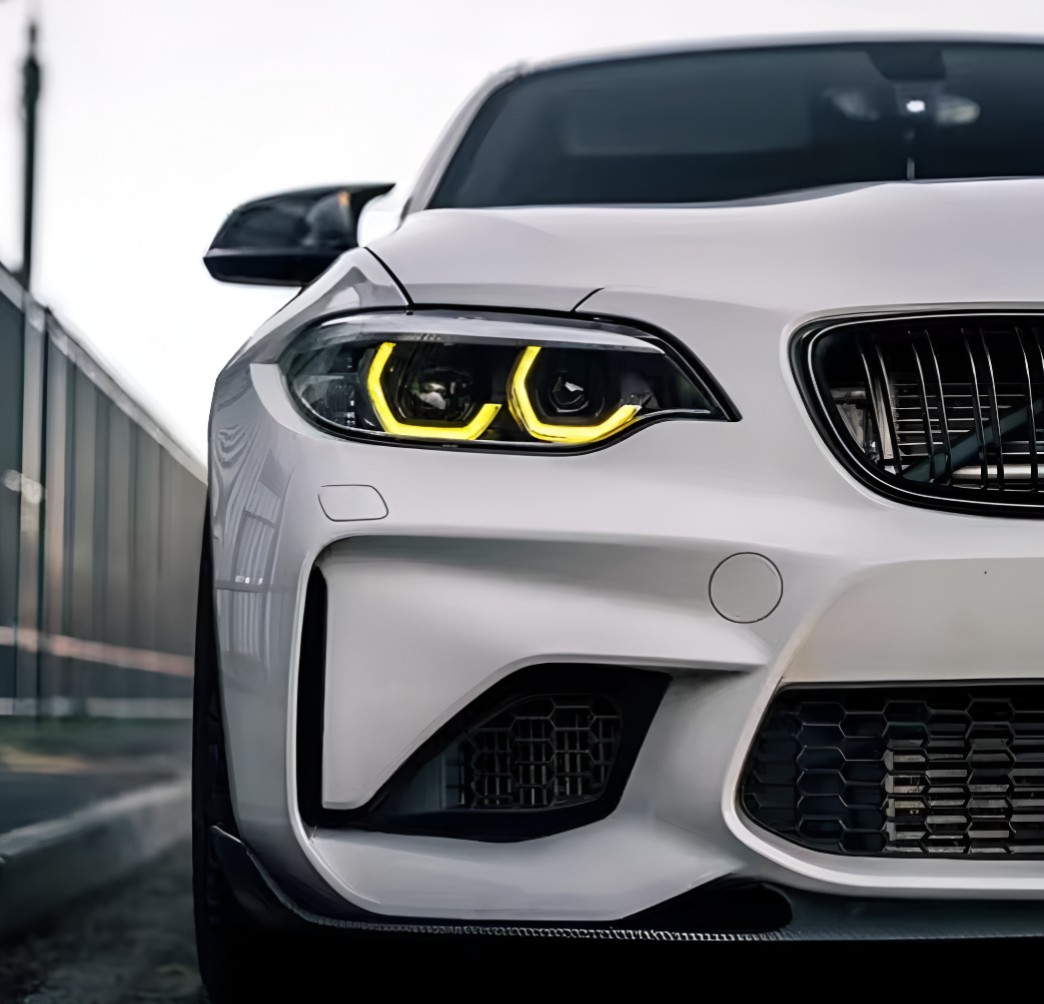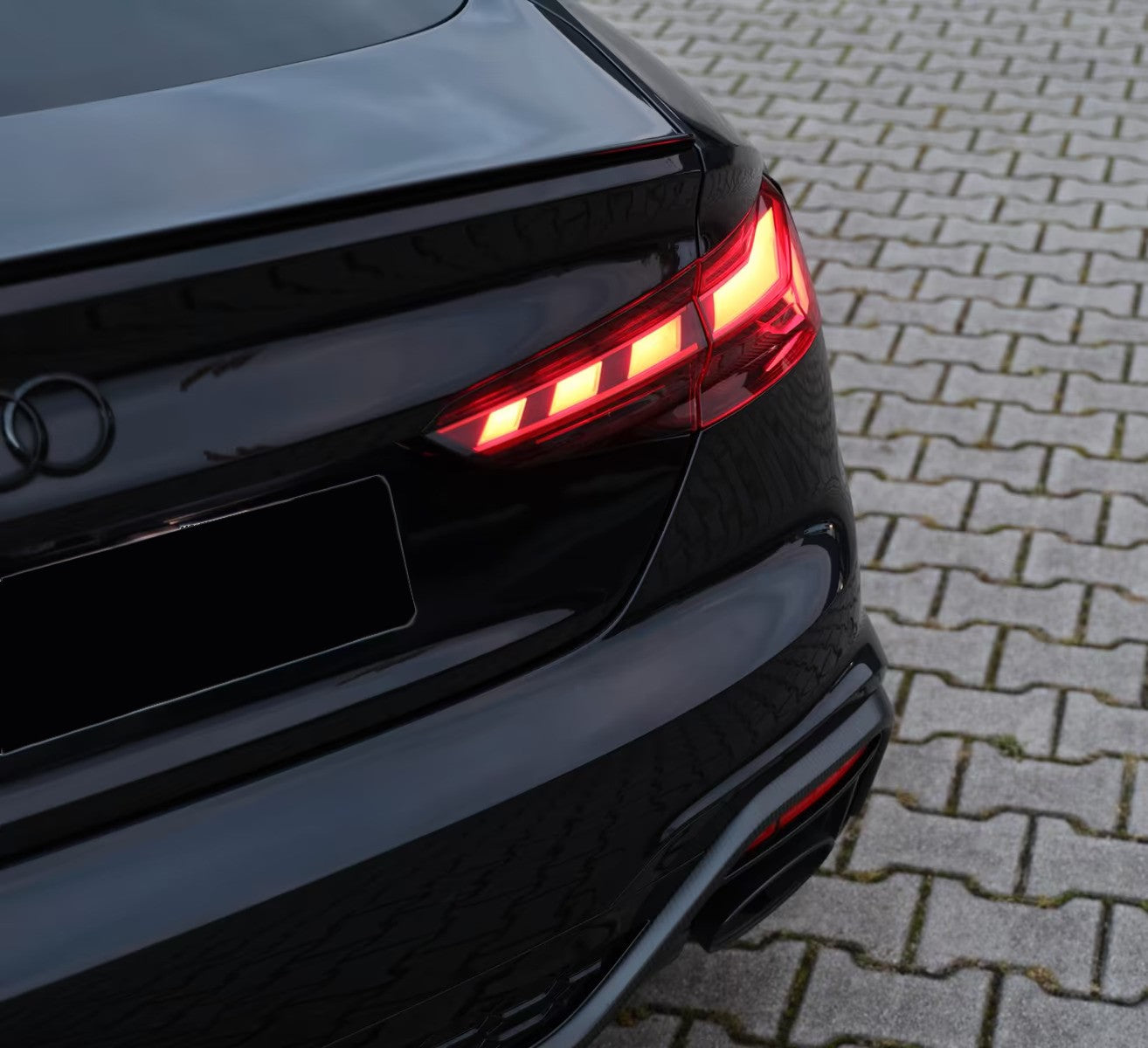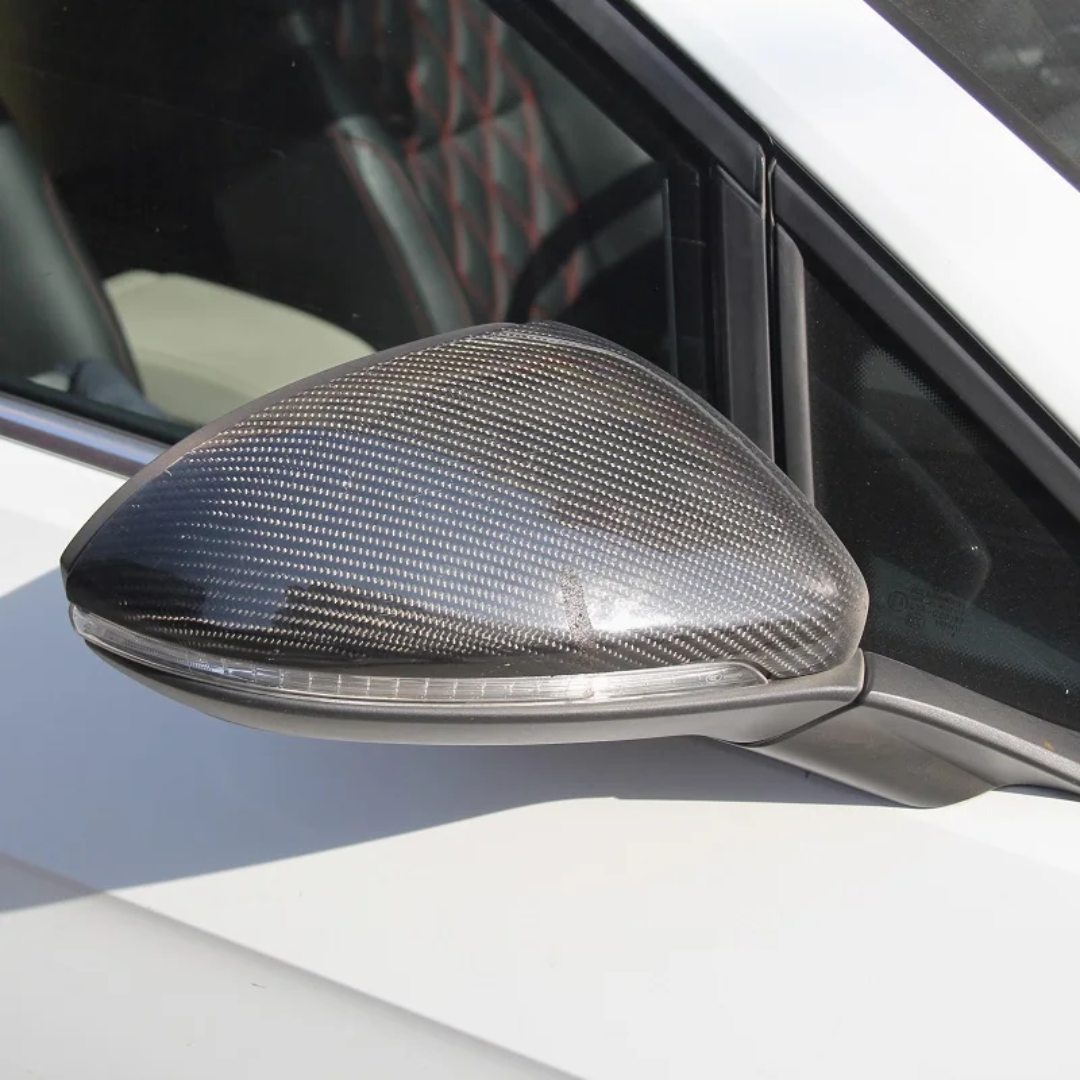BMW 6 Series (E63 / E64) — Reliability guide (2003–2010)
The BMW 6 Series E63 (coupe) and E64 (convertible) pair grand-touring luxury with strong, characterful engines. Under the hood you’ll commonly find naturally aspirated straight-sixes, V8s and — in the M6 — a high-revving V10.
These powerplants generally deliver excellent performance and refinement, but each architecture brings predictable maintenance items and weak points. Below I summarize what owners and specialists consistently report and what you should check, engine by engine.
You already own a BMW 6 Series E63 and want to improve it? Find our accessories online.
Find Carplay modules, black front grilles, interior buttons replacements and much more to improve your car!
Quick overview — which gasoline engines were offered (relevant to reliability)
-
630i — inline-6: M54 (early years) then N52 (mid-cycle refresh).
-
645Ci — V8: N62B44 (4.4 L).
-
650i — V8: N62B48 (4.8 L; later, more refined V8).
-
M6 — V10: S85 (5.0 L, high-revving, from the M division).
Below I cover each engine in detail: what tends to fail, symptoms, inspection tips, and maintenance signals that the car has been cared for.
630i — inline-6 (M54 then N52)
What this engine is
The 630i started life with the M54 straight-six and later switched to the more modern N52 six-cylinder. Both are smooth and well-regarded for long-distance comfort and overall durability, but they have distinct service notes.
Known reliability issues
Common to both M54 and N52
-
Cooling system components: plastic thermostat housings, plastic radiator end tanks, and plastic water pump impellers become brittle with age. Failures lead to coolant loss and risk of overheating.
-
Oil leaks: valve cover gasket and oil filter housing gasket leaks are frequent as cars age. These often start as light seepage and worsen.
-
Ignition coils and spark plugs: coil failures cause misfires, rough idle, and engine warning lights. Replace coils and plugs on symptom or on a preventive schedule.
-
Vacuum/PCV system (crankcase ventilation): oil-consumption and rough idle can be tied to a failing PCV/CCV system.
M54-specific
-
The M54 is a simpler, robust unit but still prone to the above cooling and leak items as it ages.
N52-specific
-
Hydraulic lifter (piston) noise on cold start — often described as a “tic” or “tick” from the valvetrain. It’s commonly linked to lifter/pushrod behavior and oil circulation at low temperature. Many owners report this noise; it’s serviceable (parts/adjustments can quiet it), and a known symptom rather than an immediate catastrophic sign.
-
Valvetronic/VANOS components — N52 uses Valvetronic and double-VANOS; solenoids, actuators, and associated seals can wear and cause performance roughness or loss of low-end torque if neglected.
How to spot problems before you buy
-
Cold start test: start the car cold and listen for a persistent metallic ticking for the first 30–60 seconds. A brief tick that dies away is common; a loud, prolonged tick deserves further diagnostic.
-
Coolant inspection: check coolant level and condition. Look for crusting or dried coolant around the thermostat housing and radiator connections. Ask whether the water pump or thermostat has been replaced.
-
Oil leak check: inspect valve cover area and oil filter housing for fresh oil. Ask for photos or a look underneath — oil streaks on the engine or belly pan are telltales.
-
Misfire scan: verify no pending misfire codes and that coils/plugs have been addressed if high mileage.
What you want to see in the service history
-
Recent cooling system refresh (water pump, thermostat, hoses) within the past 50–100k miles.
-
Valve cover gasket and oil filter housing work already done (common to need it once in life).
-
Evidence of VANOS/Valvetronic service if the car is high-mileage.
645Ci / 650i — V8 (N62 family)
What this engine is
The N62 family covers the 4.4L (N62B44, used on 645Ci) and later the improved 4.8L (N62B48, used on 650i). These are aluminum V8s with Valvetronic and dual VANOS; they are refined and powerful but more complex than the inline-6.
Known reliability issues
-
Oil leaks: valve cover gasket leaks and general seepage are common on N62 engines as the cars age. Oil on the upper block and covers is very typical.
-
Valve stem seals and oil consumption: owners report valve stem seal wear; this can cause increased oil consumption and smoking on startup or hard acceleration.
-
Valvetronic / VANOS components: the variable valve lift system can have failing actuators or sensors; symptoms include rough idle or loss of smooth low-end response. Some early cars exhibited Valvetronic intermediate lifter problems that required replacement to restore smooth idle.
-
Cooling system: like the straight-sixes, plastic cooling parts age poorly — hoses, coolant flange, and water pump are items to watch. Radiator problems and coolant leaks have been reported.
-
High-cost maintenance items: because the N62 is more complex, jobs such as valve cover gasket replacement, timing-related service, or Valvetronic repairs can be more expensive than on smaller engines.
How to spot problems before you buy
-
Check for oil drips and stains around the valve covers and front/rear of the engine. Heavy oil on the exhaust manifold or down the sides of the block is a sign the gaskets need work.
-
Look for smoke and oil consumption: on a short test drive, accelerate briskly and look for any smoke from the tailpipe. Blue smoke or persistent oil top-ups indicate worn valve stem seals or rings.
-
Listen for rough idle: Valvetronic or VANOS faults often show as erratic idle or loss of smooth response at low RPM. Scan for stored fault codes relating to Valvetronic position sensors or VANOS solenoids.
-
Cooling system condition: ask whether the radiator, water pump and thermostat have been replaced; inspect for corrosion or plastic part degradation.
What you want to see in the service history
-
Valve cover gasket / cam cover work documented.
-
Cooling system refresh (pump, thermostat, hoses) documented.
-
Any Valvetronic/actuator replacements logged or known fixes performed.
M6 — S85 V10 (high-revving 5.0 L)
What this engine is
The S85 is a bespoke, naturally aspirated V10 developed by BMW M. It’s high-revving, delivers exceptional power and soundtrack, and is mechanically sophisticated: individual throttle bodies, dry-sump (depending on spec), and a very tight redline. The S85 is an enthusiast engine — thrilling but maintenance-intensive.
Known reliability issues and considerations
-
High maintenance nature: the S85 was designed for performance. Routine maintenance intervals and component quality must be strictly observed. The engine is not “cheap” to maintain.
-
Rod bearings / internal wear: high-stress engines like the S85 are monitored closely by owners. Some owners and shops recommend inspection/replacement of internal bearings at major service intervals; the earlier E-series M engines set the tone that internal wear items are something to watch as mileages climb. (Owners frequently treat S85 cars as high-service vehicles.)
-
Oil system and pumps: high-performance engines rely on robust oiling systems. Any signs of oil pressure fluctuation, low pressure lights, or oil leaks should be taken very seriously.
-
Throttle actuators and electronics: the S85 uses complex electronics and actuator systems; failures can produce limp modes or erratic behavior.
-
Transmission compatibility: the M6’s gearbox (whether SMG or later automatic) is mechanically stressed by the V10; transmission service history matters here too.
How to spot problems before you buy
-
Full service records are essential: S85 cars must show meticulous maintenance; missing major service items is a red flag.
-
Oil pressure / idle behavior: check oil pressure behavior on start and idle (where available) and listen for unusual noises at cold start and high rpm.
-
Rod bearing/engine inspection history: ask whether internal bearing work has been performed, especially on very high-mileage cars. This is not required on all S85s, but given how performance engines wear, it’s an important discussion point.
-
SMG / gearbox logs: if the car uses SMG, review gearbox service and clutch replacement history. SMG repairs can be costly.
What you want to see in the service history
-
Extensive, dated maintenance entries for oil changes (high-quality oil, correct grade), valve and throttle system checks, and any internal engine work.
-
Proof of transmission service and clutch/SMG maintenance as applicable.
Cross-cutting engine system notes (applies to all gasoline engines above)
Cooling system — a universal weak spot
BMWs of this era use many plastic cooling components. Over time these parts age, crack, or fail. Common failures include:
-
Plastic water pump impeller or housing failure
-
Cracked thermostat housings
-
Radiator plastic end-tank leaks
-
Collapsed coolant hoses
Why it matters: a failing cooling component can quickly lead to overheating and catastrophic engine damage. On purchase inspections, ask whether the cooling system has been refreshed. If not, budget for it.
Oil leaks & PCV systems
-
Valve cover gaskets and oil filter housing gaskets commonly leak after many years. These are straightforward to repair but messy and indicative of age.
-
PCV/CCV failures cause oil consumption, smoking, and rough idle. Replacing/cleaning the PCV system is a common and effective remedy.
VANOS / Valvetronic / related actuators
-
Variable camshaft and valve lift systems improve performance but add failure points: solenoids, actuators, sensors and seals will wear. Symptoms include poor low-end torque, rough idle or engine warning lights. These systems can be serviced or replaced, but the car’s history should show attention to these items.
Ignition coils and injectors
-
Coil packs and ignition components wear; misfires and rough operation are common symptoms. Replace as needed. On direct-injection engines (where applicable), injectors can be a maintenance item.
Pre-purchase checklist (engine-focused)
When you inspect a candidate E63/E64 coupe or convertible, run these checks:
-
Cold start listening — note any unusual ticks, knocks or extended valvetrain noise.
-
Oil and coolant condition — check levels, smell (fuel vs. oil contamination), and look for water/oil mixing.
-
Smoke test — look for blue/gray smoke on acceleration and at cold start. Blue smoke suggests oil burn (valve seals, rings).
-
Service history — look for documented cooling system replacements, valve cover/filter housing work, VANOS/Valvetronic service, and coil/plugs replacements. For M6, look for thorough documented engine and transmission care.
-
OBD scan — read stored & pending trouble codes; don’t rely only on the dash.
-
Compression / leak-down test (recommended) — especially on high-mileage V8s and the V10 to check ring and valve sealing condition.
-
Fluid condition — oil should be clean and not diluted; automatic transmission fluid should be clean (no burnt smell).
-
Test drive — check for smooth power delivery through the rev range, no surging, no misfires, and steady oil/coolant temps.
What to prioritize by engine
-
630i (M54 / N52) — great balance of reliability and cost. Prioritize cooling system history and evidence of valve cover/filter housing attention. If lifter noise is present, understand what remedy was done (or budget for it).
-
645Ci / 650i (N62) — more complex and prone to oil consumption and valve-train related issues. Prefer cars with documented cooling and valve cover/Valvetronic work.
-
M6 (S85 V10) — an enthusiast’s engine: incredible character but high-maintenance. Only buy with a full service history and a willingness to accept above-average maintenance costs; require detailed records.
Transmission Reliability
Automatic (ZF 6HP)
-
Transmission fluid leaks from the pan gasket and mechatronic sleeve are common.
-
Delayed engagement or harsh shifts may point to worn solenoids or fluid contamination.
-
Fluid is officially “lifetime,” but specialists recommend replacement every 60,000 miles.
Manual (rare)
-
Generally reliable; clutch wear depends on driving style.
-
Check for synchro grinding in 2nd and 3rd gear — a known wear point.
SMG (M6)
-
SMG hydraulic pump can fail or become weak with age.
-
Clutch replacements are costly but necessary every 60–80k miles depending on use.
Suspension & Steering
-
Front control arm bushings wear and cause vibration under braking.
-
Rear suspension links can develop play, leading to unstable handling.
-
Electronic dampers (EDC) can leak or fail; replacements are expensive.
-
Steering racks are durable, but fluid leaks at seals can appear with age.
Check for:
-
Uneven tire wear.
-
Clunking or vibration over bumps.
-
Warning lights for adaptive suspension (EDC).
Braking System
-
Brake rotors and pads wear quickly on heavier V8/V10 models.
-
ABS sensors can trigger intermittent warning lights.
-
Check for soft pedal feel — possible air in lines or aging brake fluid.
Electrical and Electronic Systems
-
iDrive (CIC / CCC): early CCC units often fail (reboots, blank screen). Later CIC systems are more stable.
-
Battery and alternator issues trigger “high battery drain” errors. The system is sensitive to voltage.
-
Comfort access and door locks sometimes fail due to weak actuators.
-
Convertible top (E64): hydraulic leaks or microswitch faults can interrupt operation.
-
Instrument cluster pixel failures (faded or missing display lines).
-
Parking sensors and rear camera can fail due to moisture intrusion.
Interior and Body
-
Soft-touch coatings peel on buttons and switches.
-
Seat bolsters wear, especially on driver side.
-
Convertible top seals can allow water ingress if not maintained.
-
Trunk wiring harness sometimes breaks from repeated opening/closing.
-
Headlight condensation due to aged seals.
Typical Age-Related Issues
-
Rubber bushings and mounts degrade after ~15 years.
-
Cracked vacuum hoses cause minor air leaks.
-
A/C compressors may fail, particularly on high-mileage cars.
-
Exhaust flanges corrode (especially in humid climates).
Pre-Purchase Checklist Summary
Before buying a BMW 6 Series E63/E64, check:
-
Service history — cooling system, oil leaks, transmission fluid, VANOS work.
-
Cold start behavior — noise, smoke, idle stability.
-
Transmission shifts — smooth and prompt, no delays or jerks.
-
Suspension condition — no knocks or instability.
-
Electronics — test all iDrive functions, air conditioning, sensors, convertible roof.
-
Oil and coolant — levels, color, signs of contamination.
-
No warning lights on dashboard.
-
Professional inspection if possible — a BMW specialist can perform a diagnostic scan and compression test.
Which Version to Choose
Best balance of reliability and cost:
-
630i (M54 or N52) — fewer complex systems, simpler maintenance.
Best performance with reasonable upkeep:
-
650i (N62B48) — smooth, powerful, but confirm stem seal and gasket work done.
For enthusiasts only:
-
M6 (S85 V10) — thrilling but very high maintenance. Only buy with impeccable documentation.
Verdict
The BMW 6 Series E63/E64 is a rewarding grand tourer with timeless looks and excellent driving feel. The gasoline engines — especially the inline-six — are fundamentally solid but need preventive maintenance. The V8s deliver great performance but suffer from oil leaks and complex valve systems, while the M6’s V10 demands deep pockets and expert care.
When properly maintained, the 6 Series can be a dependable luxury coupe or convertible. But neglected examples quickly become expensive to restore. Prioritize full maintenance records, cooling system health, and clean mechanical operation — and you’ll enjoy one of BMW’s most elegant modern GTs.




![[BUYING GUIDE] BMW 6 Series E63/E64 Reliabilty as a used car](http://europremiumparts.com/cdn/shop/articles/rn-image_picker_lib_temp_20a937f9-e42c-4cdc-b1c2-110892af8087.jpg?v=1762772685&width=1600)